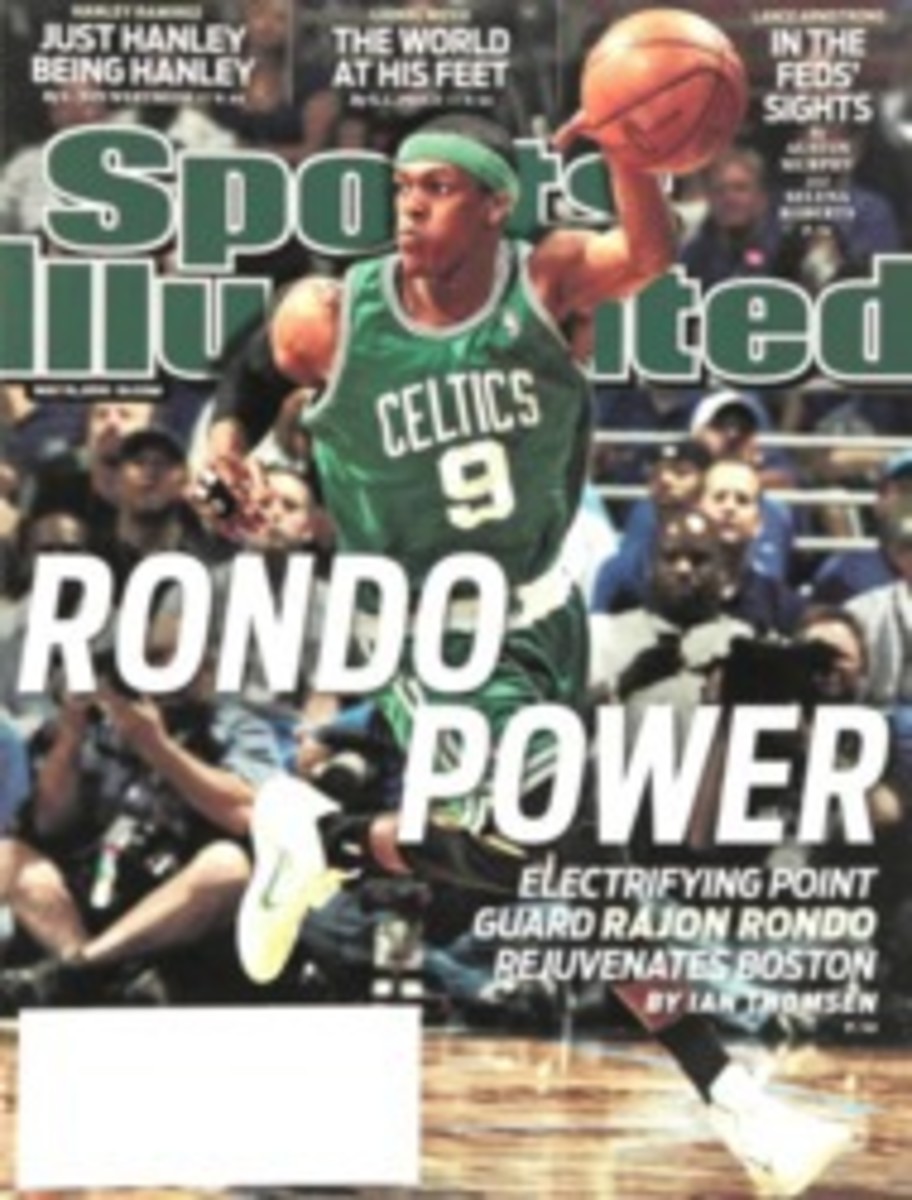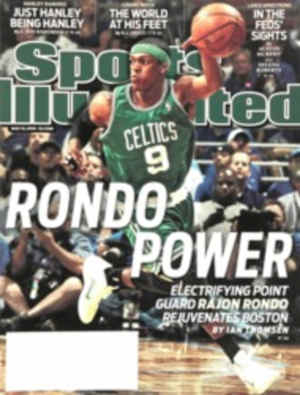
The Education Of Gordon Hayward
In time Gordon Hayward may grow out of his altar-boy looks and add heft to his lanky frame, an edge to his humble, agreeable manner and a list of celebrities to his speed dial. But at an NBA Draft Combine media session in Chicago this past weekend, the 20-year-old still seemed more the dedicated Butler sophomore engineering major he recently was than the NBA millionaire he soon will be. Sitting at a hotel ballroom table recently vacated by likely No. 2 pick Evan Turner, Hayward explained how he handled eight consecutive team interviews the day before ("I tried to be excited for each one")—and considered the strangest question he had fielded from a team so far. (Asked by the Jazz psychologist, "What does two and two mean?" Hayward, a math whiz, replied, "Four.") But to questions about what position he might play or what teams would be working him out over the next few weeks, he found himself repeating a phrase he couldn't have imagined uttering just a few years ago: "You'll have to ask my agent."
As "weird" as he admittedly felt saying that, it was probably the least surreal experience Hayward has had in the five years since the then 5'11" whippet-thin high school freshman guard sat on his bed in Brownsburg, Ind., rehearsing how he would tell his basketball coach he was quitting hoops to focus on tennis. (His mom, Jody, would persuade him to give it one more year.) Since then, so many unlikely things have happened that Hayward wrote in a letter to Jody on Mother's Day, "Can you believe all the I-can't-believe-it moments I've had in my life?"
In high school Hayward sprouted to his current 6'8" height, was a two-time all-state singles player and led Brownsburg High to the Class 4A state basketball title over favored Marion by making a layup at the buzzer. He got three basketball scholarship offers: one from IUPUI, one from Purdue, his parents' alma mater, and one from Butler, a small school in nearby Indianapolis.
Hayward chose Butler, in part because the Bulldogs' 6:30 a.m. basketball practices wouldn't interfere with his plans to get a computer engineering degree and because his twin, Heather, could play tennis for the school. As a freshman swingman he earned Horizon League Newcomer of the Year honors, with 13.1 points and 6.5 rebounds per game. As a sophomore this past season he improved his output to 15.5 and 8.2 and led the Bulldogs to the NCAA title game, literally coming up an inch short of beating Duke when his half-court heave bounced off the rim at the buzzer. In rare agreement the attending media declared that it would have been the greatest shot, the greatest upset, the greatest game in the history of college sports. But even shy of all that, it was unforgettable.
Hayward was suddenly famous around the country and mobbed by fans at his local church and McDonald's. The question was: Would he stay in school and make Butler a championship contender next year or leave for the NBA?
That decision is a tale in itself.
When Gordon Daniel Hayward was a grade-schooler, his dad, Gordon Scott Hayward, helped him compile a list of steps he needed to take to realize his dream of playing in the NBA—START ON SIXTH-GRADE TEAM reads one entry in faded red ink—but by high school Hayward saw that dream as far-fetched. "I was really small," he says. "It was hard for me to play with older guys because they would just abuse me. I thought maybe I should quit the high school team and just play at church with my buddies because the NBA didn't seem very realistic."
Hayward got taller and, aided by the dual demands of tennis and basketball, much better. The first person to suggest that Hayward had NBA potential was Butler coach Brad Stevens, who was blown away by the player's versatility, on-court savvy and fluid athleticism when he was recruiting him. "He was a guy who could jump up and dunk it after a change-of-direction move, off of either foot equally, and that's unusual," says Stevens. "And he always made the right basketball play. His decision-making wasn't affected by the situation."
Gordon Scott didn't give Stevens's NBA comment too much weight. "It was one man's opinion," he says. Yet last summer, as Hayward emerged as a star of the gold-medal-winning USA Under 19 world championship team, it became clear that Stevens was not alone in his judgment. "I got this sick feeling in my stomach because I realized I was not prepared for this," says Gordon Scott, a software engineer who likes to joke that he doesn't buy underwear without consulting Consumer Reports. When agents started leaving messages last fall, he decided to call them back, "to educate myself to understand the whole process."
But when Jody heard those same messages, she cried. "You hear all the bad things about the NBA, temptations and things like that," she says. "I didn't think he was spiritually strong enough to handle anything like that." She was also not convinced that he was good enough for the NBA. "Honestly, I didn't see it. Plus, I loved Butler so much—the team, the coach, the influences. I was in denial."
The couple agreed: He would learn the draft process, and she would "put it in the Lord's hands and pray about it," Gordon Scott says. Their son would focus on school and Butler basketball. The father talked with agents, sifted through phone numbers of players who had pondered leaving early and weighed cautionary tales, such as that of former Dukie Josh McRoberts, who was expected to be a mid-first-round pick after his freshman year but fell to the second round after his sophomore season. Meanwhile, Stevens talked to G.M.'s and scouts and found that they were intrigued by Hayward's package of size, instincts and perimeter skills. "Comparing my notes to Brad's, it was pretty clear Gordon was projected in that 10-to-20 range," says Gordon Scott. And that was before the NCAA tournament, which "made him pop" on teams' radars, according to one Eastern Conference G.M.
As the Haywards drove away from Lucas Oil Stadium after the loss to Duke, Jody got in one last parry: "If God wanted him to go to the NBA, he would have hit the shot." But the others in the car agreed it was time for Hayward to go. "What else is he going to do," asks Gordon Scott, "get Butler all the way back to the final and hit the shot?"
A week later Gordon Scott met with his son for lunch and presented him with all the intelligence he had gathered. On April 14 Hayward declared for the draft without hiring an agent, though he and his family knew that barring injury or cold feet, he wasn't going back to college. "It was one of the hardest decisions I've ever had to make," says Hayward, who made the choice official in a press conference on May 7. "From a basketball standpoint, it was kind of easy. What was difficult was leaving behind great people at Butler. My teammates were my best friends."
Hayward had been working with the staff at St. Vincent Sports Performance Center, an Indianapolis training facility that has prepared a number of draftees, including former first-rounders Greg Oden, Mike Conley, Daequan Cook and Jeff Teague. The comprehensive six-days-a-week, nine-hours-a-day program for prospects includes basketball-specific strength, agility and skills training, physiology and biomechanical assessments and a nutrition plan, which in Hayward's case recommends he up his caloric intake to 5,000 calories a day to add weight to his 207-pound frame. "We are trying to get these guys to be the best athletes and the best basketball players they have ever been in their lives," says director Ralph Reiff.
For the first two weeks Hayward got in workouts around his academic schedule. Once final exams were done on May 3, St. Vincent became a full-day job. Reiff had gathered feedback from scouts and G.M.'s who had questions about Hayward's strength and athleticism. "What we have found out is that he is very strong, he is very mature physically for his age, and the real upside is that he's not done," says Reiff, who relays such analysis back to teams. "And he is an extremely talented athlete. If he makes a mistake, he can recover and correct it."
Another concern was Hayward's shooting—after hitting 45% from the arc as a freshman, his percentage dropped to 29% this season as teams guarded him more effectively. After an initial adjustment period during which he was, he says, "trying too hard to get better" while shooting 50 NBA threes daily at St. Vincent, Hayward took the staff's advice and relaxed. In the four sessions before he went to Chicago, he made 59% of his three-pointers.
While Hayward was being prepped by St. Vincent, his dad was vetting prospective agents. He prepared a two-page survey for about 15 hopefuls that included questions ranging from What do you charge? to Should Gordon stay in the draft? to Whom would you recommend if we don't hire you? One agent called to complain about how many hours he was spending on his "thesis." "It was the most incredibly thorough process I've been through in 25 years," says Mark Bartelstein, the agent who survived to sign Hayward and take over St. Vincent's weekly bill, which Gordon Scott had been paying. "His parents didn't want to leave any stone unturned."
Now their son's fate is out of their hands. Hayward's first proving ground was the Chicago combine, a three-day invitation-only event for first- and second-round NBA draft prospects. The players are put through a battery of drills, measurements, physical tests and interviews. It wasn't a showcase for what is arguably Hayward's greatest strength, his feel for the game and his ability to make the right play at the right time, and it probably didn't affect his stock much.
Though some NBA observers still had questions—"I don't know that he can stay with threes defensively, but he has to because he can't guard fours," says one Eastern Conference G.M.—Hayward thinks he performed "all right" over the weekend. "I hope I impressed some people." It's likely he did: So many teams want to see Hayward that he won't be able to work out with all of them before the draft on June 24, says Bartelstein. "He's going to see pretty much everybody [drafting] from five to 15."
Wherever Hayward lands, Jody is at peace with her son's decision. She and her husband have come to believe there is a higher calling to his hoops success. "Look at us, we're two 5'10" average athletes," says Gordon Scott, who played high school tennis and baseball. "It doesn't make sense for him to be 6'8"." Adds Jody, "We think he has a purpose in life to be a positive influence, and basketball is his platform."
For now, Hayward will try to use his play to positively influence NBA teams. Come June 24, he just might have another I-can't-believe-it moment.
Now on SI.com
For analysis of other top prospects and mock drafts go to SI.com/nba
"What else is he going to do," asks Hayward's father, "get Butler all the way back to the final and hit the shot?"
PHOTO
Photograph by JOHN W. MCDONOUGH
FAST TRACK Hayward's role in leading Butler to the NCAA tournament title game made him "pop," according to one NBA G.M.
PHOTO
ANDREW HANCOCK
PREP SCHOOL After declaring for the draft, Hayward worked out six days a week with Patrick Patterson and other prospects in Indy.
TWO PHOTOS
COURTESY OF THE HAYWARD FAMILY
BULLDOG PUPS Hayward's wish to go to school with his twin sister, Heather, contributed to his decision to pick Butler over his parents' alma mater, Purdue.

